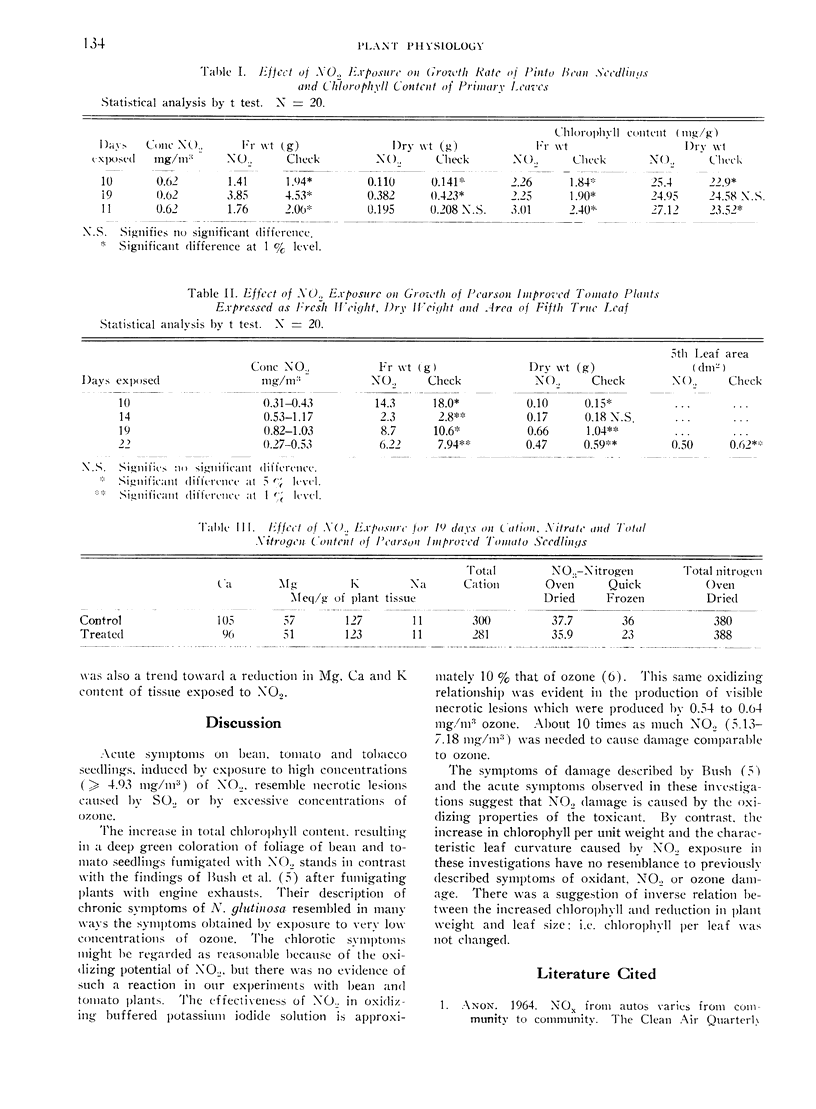Abstract
Nicotiana glutinosa and pinto bean seedlings (Phaseolus vulgaris) were exposed for short periods (3 days or less) to high concentrations of NO2 (4.11-20.53 mg/m3 to compare the resulting leaf lesions with ozone damage produced at concentrations of 0.43 to 0.86 mg/m3. Although the same physiological age leaf tissue was damaged by both toxicants, damage caused by NO2 was unlike that caused by ozone.
Pinto bean (Phaseolus vulgaris) and Pearson improved tomato (Lycopersicon esculentum) seedlings were continuously exposed for 10 to 22 days, to low concentrations of NO2 (less than 1.03 mg/m3). These exposures caused significant growth suppression, increase in green color (total chlorophyll content), and distortion of leaves.
Full text
PDF



Images in this article
Selected References
These references are in PubMed. This may not be the complete list of references from this article.
- Arnon D. I. COPPER ENZYMES IN ISOLATED CHLOROPLASTS. POLYPHENOLOXIDASE IN BETA VULGARIS. Plant Physiol. 1949 Jan;24(1):1–15. doi: 10.1104/pp.24.1.1. [DOI] [PMC free article] [PubMed] [Google Scholar]
- LODGE J. P., Jr, XINTERAS C., PATE J. B., ALTSHULLER A. P. Methods of analysis of polluted atmospheres in the U.S. Air Water Pollut. 1963 May;7:79–90. [PubMed] [Google Scholar]
- THOMAS M. D. Effects of air pollution on plants. Monogr Ser World Health Organ. 1961;46:233–278. [PubMed] [Google Scholar]




